Exponent II's Blog, page 4
November 9, 2025
What Total Obedience Looks Like for Wives of LDS Apostles
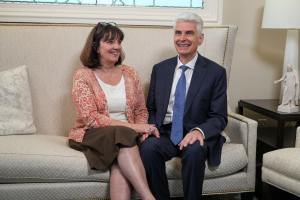 November 9, 2025 Rose
November 9, 2025 RoseElder Gérald Caussé, 62, a native of France, was called to serve an apostle by President Dallin H. Oaks on November 6, 2025. This top position in the Church of Jesus Christ of Latter-day Saints brings with it great power, adulation, authority—and a lifetime of responsibility.
Elder Caussé will serve in this calling until he dies.
His past calling, Presiding Bishop, included retirement at age 70, when he and his wife hoped to spend more time in their beloved France where most of their children and family members live.
His wife, Valérie, has sacrificed greatly to serve with her husband, leaving her home in France for Germany and eventually the United States. Elder Caussé reports that “some of his children stayed in France, [and] we admire them for not having their parents nearby for now 17 years.” Three of their five children and their families currently live in France.
Sister Caussé says that “one of [her children] told us she cried every night, but she didn’t tell us anything besides encouragement. We’re so proud of them.”
Since English is a second language for both and since they were looking forward to spending more time with their family and friends in France, this calling comes with great sacrifices for both Elder and Sister Caussé.
When Elder Caussé was called to be an apostle, a calling for which his wife would be required to serve, sustain, and assist in his duties and responsibilities wholeheartedly for the rest of her life, his wife was not present.
President Oaks did not invite Sister Valérie Caussé to be present during the calling of her husband, nor did he ask for her permission or agreement.
After the call was made, Elder Caussé notified his wife that he had received the new, demanding, lifelong assignment.
Although Sister Caussé was excluded from her husband’s calling, much will be expected of her. She will most likely be asked to speak at stake, regional, and general meetings. Like other heathy apostles’ wives, she will also be asked to speak at university devotionals, seminary and institute trainings, worldwide devotionals, and women’s conferences. Without being called or sustained, she will serve alongside her husband in many significant functions and yet be excluded from others.
Sister Caussé will also spend many lonely days and weekends while her husband serves tirelessly in his new calling. Because some top LDS leaders suffer with serious health problems, much will be expected of the healthy, younger apostles as they lead a global church. According to church protocol, after a church meeting she will be forbidden from standing up before her husband does, and will be expected to defer to him in decision-making and planning. Her life will require total obedience to the leaders of the LDS Church.
In the Tribune interview, Elder Caussé states that his wife said “yes” to his calling as a General Authority seventeen years ago because she “had already said yes a long time ago in the temple. So we don’t need to look at each other and say ‘yes’ for this or ‘yes for that,’ we go where the Lord wants us to go. That’s the commitment we’ve made since the first days of our marriage.”
Some call this being “church broke.“
Elder Caussé joins three other apostles, Elders Uchtdorf, Kearon, and Soares, in representing more than half of the LDS Church members who live outside the United States. With a master’s degree in business, Elder Caussé worked as a strategy consultant and lead a major food distribution company in France before being called as a General Authority. His business acumen will be helpful as the Church moves to become a trillion-dollar corporation by the year 2044.
Abby Maxwell Hansen wrote an outstanding article documenting how wives of LDS men are not included when their husbands are called to serve as apostles. Although bishops’ and stakes presidents’ wives are typically present when their husbands are called, LDS leaders exclude wives of apostles from interviews when their husbands are asked to serve.
As a matter of courtesy, it would be gracious, thoughtful, and considerate for LDS leaders to include the wives of men when all callings that are given, especially when a lifetime of service and sacrifice is expected of them. The LDS Church handbook states that “if the member is married, the leader invites the spouse to be present when the calling is extended.” That should apply to apostles’ wives as well.
Whether it involves polygamy, ecclesiastical sexual abuse, or the creation of policy, LDS Church females have been expected to suffer in silence and to accept unequivocally whatever church leaders want to do.
According to a 2024 Pew Research Survey of LDS members in the United States, 47% are currently female (down from 56% ten years ago). Since the Church of Jesus Christ of Latter-day Saints refuses to release detailed membership statistics, we cannot confirm the accuracy of the Pew Survey.
I see young, middle-aged, and older women leaving because they are tired of being ignored, abused, and misled by LDS leaders. They want the same respect, honesty, and transparency that they observe elsewhere. I see many women who are well-paid and highly valued at work, but who find little respect in their church callings, where male leaders consistently overrule their decisions. Some have left the Church.
LDS Church leaders should show respect to women by inviting them to be present when callings are extended that involve their husbands, especially if that calling is that of an apostle.
Photo from the LDS newsroom article.
November 8, 2025
The Unattainable Quest of Hustling for Worthiness in the LDS Church
 November 8, 2025 Rose
November 8, 2025 RoseFrom the time LDS members are eight until they die, they are hustling for worthiness, attending interviews with priesthood leaders, obeying long lists of rules created by LDS men, and seeking to become worthy of God’s conditional love. Sadly, this is an unattainable quest.
When LDS children turn eight, they are required to attend bishop’s interviews. These one-on-one interviews are held bi-annually for young people and annually for single adults. In addition, families are expected to attend annual tithing declaration interviews, and biennial interviews for temple recommends. Interviews with church leaders are also required for church callings, priesthood advancements, missionary service, ecclesiastical endorsements, and ministering.
Although a parent or other adult may be present when a youth is interviewed, the youth must ask for this privilege. This leaves predatory bishops, whom members are told are called by God, to groom, abuse, and molest young victims, which is happening far too frequently.
The goal of most of these interviews is to determine a member’s worthiness.
Former Pres. Russell M. Nelson said: “Individual worthiness to enter the Lord’s house requires much individual spiritual preparation. But with the Lord’s help, nothing is impossible. In some respects, it is easier to build a temple than it is to build a people prepared for a temple. Individual worthiness requires a total conversion of mind and heart to be more like the Lord, to be an honest citizen, to be a better example, and to be a holier person.”
That sets an almost impossible standard of conduct: to be totally converted in mind and heart, to be more like the Lord and to be a holier, honest person. Who can truthfully say that have reached this level of righteousness and obedience?
According to Webster’s Dictionary worthiness means either “having worth or value” or “having sufficient worth or importance.” Dr. Brene Brown, professor of social work, writes, “One of the truisms of wholehearted living is You either walk into your story and own your truth, or you live outside of your story, hustling for your worthiness.”
In a recorded lecture, Dr. Brown says, “When we can let go of what people think, and own our story, we gain access to our worthiness – the feeling that we are enough just as we are, and that we are worthy of love and belonging.”
She states that rather than “hustle for our worthiness by constantly performing, perfecting, pleasing, and proving…it’s time to walk into our experiences and to start living and loving with our whole hearts.”
As I spent decades hustling for worthiness in the LDS Church, I never felt like I was doing enough. Each year the list of things a Mormon must do grows longer, and now it is anathema to even say the word “Mormon,” so I have sinned by writing his sentence.
Members are told how to eat, drink, wear, say, do, not do, consume media, spend their discretionary time, read, and even think. A friend compiled a list of 668 rules for members, and although some have been revised with the new Strength of Youth guidelines, others have been tightened, as the Church doubles down on garment-wearing requirements.
Since bishops are sustained as the “common judge in Israel” in the LDS Church, members are taught that these leaders have the gift of discernment, which implies that they can counsel members, something for which most bishops lack training and competency.
Most LDS worthiness interviews are designed to determine if a member is obedient to Church leaders (not God) and to Church standards of conduct. No interview is solely designed to determine how a Church member is doing and if they have specific needs that the Church community could address. In some cases, members feel compelled to be inauthentic in order to see their children married or to achieve benchmarks in the LDS culture. This is unacceptable!
Worthiness interviews create a system that encourages abuse. Too many have been groomed and sexually abused by bishops through the interviewing process. Others are deeply wounded by bishops who use inappropriate questions in interviews that leave people feeling broken and afraid.
I have talked to many members who believe they are never doing enough or are good enough to be worthy of God’s love because of the Church’s worthiness interviews.
A top church leader taught that God’s love is conditional and depends on how well a person keeps the commandments, which are defined by LDS authorities.
The idea that the Mormon God loves me less than my parents do is wrong and harmful.
I know serial pedophiles and lifelong fraudsters who attend the temple regularly while some who drink coffee or doing wear their garments regularly are deemed unworthy to attend. This is unacceptably unfair.
The Church should eliminate worthiness interviews, allowing bishops more time to minister to their members and determine how to best serve the sick, suffering, and infirm. Bishops spend far too much time monitoring members’ worthiness and tithe paying. That time could be better spent reaching out to the lonely, broken-hearted, and those in need.
It is time for Church leaders to teach members they are worthy because they are a child of God.
If Church members felt that God loved them unconditionally, there would probably be less scrupulosity, depression, and anxiety. A psychoanalysist wrote an excellent Exponent article about this topic that deserves consideration.
If Church leaders teach and show that their members are loved less by the LDS God than their own parents, something is wrong. The Church of Jesus Christ of Latter-day Saints needs to teach members that they are uncondtionally and infinitely loved by God. LDS leaders need to stop making members hustle for God’s love or for their own intrinsic worth and worthiness.
Please rememeber:
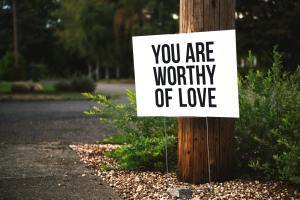
You are enough.
You are worthy.
You are beautifully and wonderfully made.
No one should have to earn their worthiness by interviews with male leaders, especially in a church that professes to follow Jesus.
What are your thoughts?
Do you think worthiness interviews are healthy ways to increase conformity in the LDS Church?
Do you believe that members should attain certain standards to attend the temple?
What are your thoughts on temple recommend interviews? One-on-one sexual purity interviews? Bishop’s bi-annual interviews with children?
Photos from Pexels
November 7, 2025
Cultivating Resilience and Spiritual Autonomy While Discussing LDS Polygamy with Kids
 November 7, 2025 Guest Post
November 7, 2025 Guest PostBy Emma Eve Marks
As a young adult decades ago, an older friend and mentor opened up to me about his ongoing wrestle to make space for faith in the prophetic call of a man who had behaved at times like a scoundrel. My new knowledge of Joseph Smith left me reeling with pain and doubt. As the holes of church history were painfully filled, I felt a sense of betrayal. The Church had intentionally withheld information, and I longed for greater transparency and a restored sense of trust. I wished that I could have been inoculated by learning such things earlier from the institution itself. I believed at the time that this might have protected me from the state of crisis I found myself in.
Decades later, I appreciate that the Church is moving towards greater transparency regarding the complicated and uncomfortable parts of our history. However, when I read the original D&C:132 Come Follow Me lesson for children back in January, I was alarmed. The history presented was inaccurate and incomplete, and, far worse, the message in the lesson was dangerous. Carol Lynn Pearson summed up the underlying message when she wrote, “They are teaching that our place as members will always be to follow what the Brethren tell us God says, no matter the dictates of our minds and hearts.”
To act contrary to one’s own heart and mind is an act of self-betrayal. And when the institution continues to promote the divine origin of Joseph’s polygamy despite the preponderance of evidence of the rotten fruit it yielded and continues to yield (see The Ghost of Eternal Polygamy), it is institutional betrayal, putting the reputation of the Church and its leaders above the welfare of the members.
I can understand how our culture makes it difficult to acknowledge polygamy as a mistake. Knowledge is prized above faith, and all-or-nothing thinking has often been promoted as a path towards certainty. If I have a testimony of one part of the restoration, then I am told that I should conclude that it is all true. This sort of thinking makes it extremely difficult and threatening for the Church to want to acknowledge Joseph’s mistakes and weaknesses. If we challenge the divine origin of polygamy, our intention may be to remove an ugly, out of place string from a beautiful tapestry, but we fear that pulling at it may in fact unravel the entire thing. Perhaps, this is why many members choose to simply deny Joseph’s polygamy, while the Church simultaneously chooses to staunchly defend it.
But truth will endure scrutiny, and God is not one to punish us for asking questions or pondering complicated issues. Therefore, I propose that rather than indoctrinating our children to believe polygamy must have divine origins, we instead immunize them against notions that Church leaders are perfect people who only speak the word of God. In reality, leaders, both past and present, are fallible human beings like the rest of us who sometimes make big mistakes, project their own ideas onto God, and cause great harm to others. The imperfection of our leaders necessitates that we listen to our hearts and minds as they are receptive to the spirit in order to build a personal connection with God to guide us.
This approach may go against cultural norms, but it offers many benefits such as building spiritual resilience, putting ultimate spiritual authority back in the hands of members, and helping members become more directly God-reliant. Of course, we too will make mistakes, but God allows us to learn from them and gain further insights as we strive to live a God-directed life. Not only does this approach allow members more space to grow up and progress spiritually, it also provides room for leaders to be normal, fallible humans, capable of acknowledging mistakes and publicly modeling accountability, repentance, and institutional amends. I would love to see the Church turn away from its authoritarian, sovereign style of governance and return to its roots in common consent moving forward (D&C 26:2).
How can we approach difficult parts of scripture or church history with our children and youth in a way that immunizes them against assumptions that Church leaders consistently speak and act for God while simultaneously helping them build a strong connection with God and a reliance on their inner compass? First, I suggest we approach this prayerfully and follow our own intuitions. The following are my thoughts. Take what is useful and leave the rest:
1. Validate feelings and encourage self-reflectionBe curious instead of corrective when it comes to how your children or members of your primary class feel. Actively listen to their thoughts and concerns. Let them know that all feelings are okay. There is no shame in doubt or uncertainty. These can open our minds to deeper truths. Teach children that their feelings are a gift from God that help them identify when something is right or wrong for them. They help us to stay safe. God ultimately wants us to be happy. “Men (and women) are that they might have joy” (2 Nephi 2:25). Encourage them to ask questions about how they feel and why. What is it that makes you feel uncomfortable? What feels wrong about this request? Journaling is a great tool for processing these feelings too.
2. Foster critical thinking skillsTeens are natural critical thinkers, and this is a God-given gift. Critical thinking is a process that can even help us identify and overcome our own biases, helping us to see and think more like Christ. Questioning, even those in authority, is not disrespectful, especially when done with the intent to seek divine truth. Teach your children to use logic and look for evidence instead of blindly accepting claims. Does this make sense? What evidence supports this claim? Does my own experience support this claim? What could be the motivation for teaching this idea? Try to look at issues from multiple perspectives and seek multiple interpretations. What other conclusions could be drawn from this narrative?
When I ponder the historical narrative of polygamy (see Candice Wendt’s “The Nightmare Before Christmas and the Nightmare of Joseph Smith’s Polygamy” parts 1 and 2), I think there are many more helpful, cautionary lessons that could be learned. Here are a few possibilities: Secrets keep us spiritually sick and are a red flag that we are doing something that deep down we know is wrong. If we refuse to face our shadow (parts of ourselves that we repress and/or hide from our conscious mind) and to repent, it will take control and may destroy us. Coercion and manipulation are not of God. If we follow Emma’s example, we may find a way to differentiate by rejecting harmful policies or doctrine for ourselves while still holding onto those that resonate and feel true.
3. Teach that Church leaders are human beings who can make mistakes and, therefore, we need a hermeneutic to recognize genuine revelationIn an authoritarian church, we are encouraged to take the teachings of our leaders as the word of God, but we would be wise to realize that God doesn’t remove the biases, weaknesses, or agency of those in church leadership positions. There are many precedents for the fallibility of leaders in ancient scripture. King David fell prey to sexual temptation. Jonah’s prejudices caused him to try to hide from God rather than teach people he didn’t like. Sometimes prophets model repentance. But sometimes they are unaware of their own biases and blindspots, reflected in scriptures or policies that can be confusing and reflect culture as well as projections of their own level of spiritual development and consciousness. This leaves us trying to make sense of scriptures that claim God is angry, violent, jealous, or vengeful. Richard Rohr offers “a hermeneutic for interpreting all Scriptures wisely” which we can extend to Latter-day teachings and history. He suggests:
“If you are meditating on a Bible text, Hebrew or Christian, and if you see God operating at a lesser level than the best person you know, then that text is not authentic revelation. “God is love (1 John 4:16), and no person you meet could possibly be more loving than the Source of love itself.”
When policies or doctrines do not reflect God’s unconditional love for all men and women, they are not of God. The priesthood ban on Blacks is one example of such uninspired doctrine and was thankfully reversed. I believe this doctrine was an incident of men making God into their own image instead of allowing God to transform them.
God does not ask us to blindly follow other men, but to simply follow Christ. So, we can analyze the evidence when considering history or modern teachings and check whether it is in line with love and with the teachings and example of Jesus Christ. We can also judge doctrine and policies by the fruit they bear.
For me personally, I have concluded that the fruit of polygamy was bitter and disgusting. It sparked pain, suffering, and violence. It was enforced with coercion, threats, and other forms of manipulation. These are not of God. It is that simple. I find freedom in letting go of these ideas as divine and accepting them as coming from Joseph and not God, because it allows me to see God as more loving and caring towards women, desiring them equal joy and happiness now and forever.
4. Model healthy boundaries and differentiationOur children learn by our example. When you are in a nuanced space with church, it’s difficult to know what to teach our children, especially regarding complicated and painful topics. I worry about confusing them, but I also want to model critical thinking as well as transparency and honesty. I no longer claim the answers to all their questions, but I can model a process to wrestle with complicated issues while retaining a faith in God’s goodness and a desire to be a part of a faith community even if I don’t always agree with what is being taught. Ultimately, the example we set can grant our children permission to think for themselves and differentiate with confidence while they seek direction from God.
We can make changes to our personal beliefs and practices faster than changes will occur in church culture or policy. I find inspiration in the story of John Woolman, a Quaker born in 1720 in New Jersey, who became an influential abolitionist long before such ideas were widely spread or accepted. During a time when slavery was widely practiced and largely unchallenged, John personally developed the conviction that such a practice was not in line with the values of Christianity. He was unable to see institutional changes during his time, but he succeeded in persuading many fellow Quakers to free their slaves, and he lived according to his beliefs and values, even personally paying slaves whenever he benefited from their labor. His example and voice continued to inspire gradual change in attitude and belief even after his death. Finally, ten years later, the Quakers became the first Christian sect to crusade for abolition.
5. Encourage a personal relationship with GodOur church has at its foundation a boy who sought answers directly from God with a trust that God would not punish him but would give to him liberally. Our children can also seek answers and trust that an unconditionally loving God will touch their hearts and minds to help guide them. We nurture this relationship when we slow down and intentionally carve out time for divine connection in our lives. Sacred texts, prayer, time in nature, meditation, and contemplation can also help nurture this connection. Meditation quiets the mind and opens us to feeling God’s peace, comfort, and promptings. Contemplation is a more active process designed to seek answers or insights from God about a specific issue or question. It is a process of expanding our own knowledge and understanding through study, critical thinking, considering multiple perspectives, and imagining multiple possibilities.
Final ThoughtsGod does not ask us to engage in self-betrayal or to blindly follow leaders to be men and women of faith. Christ invited us to follow Him. As we strive to follow Christ and teach our children to do the same, we can help them become spiritually resilient, God-directed individuals. We can value scriptures and even our fallible leaders, gleaning true revelation and inspiration where we recognize it while simultaneously setting healthy boundaries and differentiating by rejecting those policies, practices, and doctrines that neither exemplify love nor resonate with our own hearts and minds. This means that we can judge the roots and fruits of polygamy for ourselves right now, even if the Church is far from ready to reevaluate its history and recognize past mistakes. The best part of letting go of believing God would command and threaten women to submit to such heartbreaking circumstances is that I get to see how God is actually far less confusing, far more loving towards Their daughters, and infinitely better than I ever previously imagined. We can trust in God’s goodness, love, and truth. As we seek divine truth, God can help us see and think more like Christ, helping to guide and transform us as individuals.
This post accompanies Emma’s recent Exponent II Come Follow Me lesson plan, Listening to Our Inner Compass Concerning Plural Marriage: A Lesson Plan for Children and Teens
Emma Eve Marks is the pen name of a professional educator who strives to live a Christ-centered life of radical love and embracing grace on the East Coast. Her all-time favorite compliment remains, “You are an emotional and spiritual badass.”
Submit a guest post! Learn more about our post guidelines and use the submission form on our guest post submission page.
October 19, 2025
Doing Feminist Theology
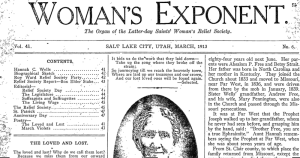
I was recently asked to give an introductory lecture on Feminist Theology for Graceland University/Community of Christ Seminary’s Center for Innovation in Ministry and Mission.
I talked about what feminist theology is, how it differs from the regular kind, with some examples from LDS history (The Women’s Exponent) and RLDS history (Marietta Walker’s Mother’s Home Column). I also outlined *how* we create feminist theology.
It is a quick overview of feminist theology for a broad audience, but it is the kind of thing that we can and should be thinking about in our Mormon feminist community.
October 18, 2025
When Life Gets You Down, Be a Chin Hair

I ran into an old friend recently, delighted to see her with an adorable pixie of post-chemo hair. I mentioned how my Dad lost all of his hair, down to his eyelashes, during chemo. She responded that she experienced something similar, then quipped, “but those darn chin hairs still managed to stick around!”

If you’re over 30 and assigned female at birth, you know what chin hairs we’re talking about. If you don’t have them (yet), you’ve been warned. The story goes like this: One day as you age (supposedly on the day you turn 30), you look in the mirror and spot something entirely new and unwanted: coarse, dark, stick-straight hairs emerging proudly from your chin. From that moment on, they become a part of the landscape of your face, stubbornly staking their rightful claim.
I checked to see if chin hairs have any special evolutionary purpose, hoping to discover some grand, obvious metaphor for life. But, no, they’re just a sign of aging and normal hormonal shifts. While facial hair is a right of passage during puberty for boys, these chin hairs represent the dark side of aging for women. Patriarchy strikes again.
Women spend endless amounts time and money plucking, waxing, shaving, and enduring laser treatments to evict those annoying hairs, yet they stubbornly return, quietly demanding space. Things will seem clear and fine, then one day you’ll touch your face or look in the mirror and – Sproing! – a stiff, pointy hair or two will be sticking defiantly out from your chin. It tracks that these persistent, undesirable hairs would thrive during chemotherapy when other hairs, meant to keep you warm or protect your eyes, fall out.
I said goodbye to my friend that day and I’m certain she hasn’t thought about chin hairs since. Me? I’m overthinking, per usual, and finding myself beginning to begrudgingly admire chin hairs for their resilience and determination. Chin hairs are terminal hairs, different from those lovely, mostly socially acceptable vellus hairs found on women. Vellus hairs tend to be soft, peach fuzz, light, and mostly invisible. In contrast, terminal hairs are rougher, darker, and more pronounced. They certainly do not fit a western esthetic of the ideal young, healthy, beautiful woman.

And, honestly, as I age, I can relate to that chin hair. Society’s messaging regularly explains how I can overcome – or at least resist – becoming undesirable as I age. Women’s maturing bodies, like chin hairs, should be controlled, contained, and shamed into submission. We need a new cream for everything, including neck wrinkles. No matter what cream I buy, though, those laugh lines and stretch marks are here to stay. And I’m okay with that – I’m exhausted from attempts to control, contain, and shame me into submission physically, mentally, emotionally, and legally.
The daily realities of a world that feels increasingly dark, mean, ugly, and suffocatingly patriarchal weigh on me. As I watch so many hard-won rights get trampled on and erased, the systems we battle begin to feel impenetrable. But what a privilege it is for me to even consider allowing myself to be defeated, give up, tune out, or fold.
Fear, anger, discouragement, setbacks, self-doubt, fear of rejection, and shame work ’round the clock to metaphorically pluck, wax, shave, and laser me permanently from persisting, resisting, speaking up, and remaining a strong ally. My ideas are unwanted, my beliefs unwelcome, my persistence unflattering, and my advocacy unattractive. Who do I think I am anyway?
Thankfully, I also see women embracing the We Do Not Care Club for premenopausal and menopausal women, declaring their independence from societal restrictions and expectations. Bold women, like Alexandria Ocasio-Cortez and Sarah McBride, stay and advocate in the public arena despite seemingly-impossible obstacles and hateful opponents. My own heart and soul resist fatalism, a tiny part of me always lighting a flame of determined hope, even if it only flickers intermittently.

In this dumpster-fire of a world, it only seems fitting to see the detested chin hair anew: resilient, patient, free, determined, unbothered, unashamed, distinct, and bold. Attack it and try to erase it however you may, but it will continue growing and return to claim space. The chin hair is clearly a founding member of the We Do Not Care Club.
So, the next time you rub your chin and feel that familiar prickle or look in the mirror and spy the tell-tale spike, stop for a moment and appreciate that little s***. Repeat this mantra: When life gets you down, be a chin hair. Then, you can go ahead and pluck it if it bothers you. It’ll grow back.
October 17, 2025
Guest Post: Holding Space for Murdered Indigenous Boarding School Children

Guest Post by Crystal Bevers
This week, I stood at the outskirts of a small gathering of about two dozen people in front of a teepee surrounded by three hundred small orange flags fluttering in the early fall breeze. A local elder from the Yakama tribe sang, cried, and prayed. An Indigenous student of mine spoke. We held a moment of silence. And we parted ways.

On this particular day, September 30th, we met for a mere twenty minutes out of a busy day at the heart of my university campus to honor the over 3,100 Native American children who were murdered in residential boarding schools across the United States and Canada from the mid-1800s until 1997.
I am privileged to teach at a small university located at the heart of the Yakama Nation in Central Washington State. I’m often reminded of the fact that, given my European ancestry, I am an uninvited guest on this land—land protected by the Treaty of 1855, land that our government and white settlers have infringed upon since the boundaries of the reservation were established. As much as I love my students, as hard as I work to be worthy of them, as much as I hope to earn their trust by the end of each semester, I must confront the fact that, here, I am an outsider.
To my Native students, I am not to be entirely trusted.
Over the last decade and more of living and working here, I have come to terms with my whiteness and my culture’s complicity in institutions like Fort Simcoe, just up the road from my university, that has worked hard to bury its past as a boarding school, a place that stole Indigenous children from their families, from their communities, cut their hair, beat them for speaking their various languages (the Yakama Nation is made up of fourteen confederated tribes and bands), forced them to dress like Euro-Americans, to speak like them, to learn like them, to believe like them. Some children survived. All left with scars, both physical and emotional.
And yet, as I listened to the Yakama elder raise her voice in a lament yesterday, I realized the ways I had also distanced myself from accountability in this tragedy. After all, I am a transplant to Washington state. My family did not directly have ties to Fort Simcoe. I could mourn the heartbreak of my students and community in a detached way. Intellectually, I understand the history. Emotionally, my heart squeezes tight at their anguish. But it remains their anguish to be grieved.
But yesterday, my mind went to my own family history. I am the product of Latter-day Saint pioneers. My great-grandfather, Charles Hopkins Allen, along with his parents, joined the westward expansion. He ended up in Provo, Utah, where he ran a sawmill. He served a mission to San Bernardino, California, and eventually helped settle central Arizona along with his wife, Elizabeth Adelaide Hoopes, and their fourteen children. Charles Allen believed deeply in Manifest Destiny—the God-given mandate for Euro-Americans to spread from sea to shining sea, with little to no regard for the First Peoples, the ones who had, as my university’s land acknowledgement notes, stewarded these lands since time immemorial.
And as my mind wandered, I thought not of boarding schools, but of the controversial Latter-day Saint Indian Student Placement Program (ISPP), which ran from 1954 to the 1990s, peaking in the 1970s, when I was a small child. This program placed Native children in (predominantly white) Latter-day Saint “host” families during the school year to offer educational and spiritual opportunities to which many Indigenous children had little access.
The early days of the ISPP placed mostly Diné (Navajo) children in Utah homes, although under then-Apostle Spencer W. Kimball’s advocacy, the ISPP became an official Church program and expanded to include other tribes and homes throughout the Intermountain West, including Arizona, where I spent my childhood. An estimated 50,000 students participated over the life of the program.
The ISPP was never framed as a cultural exchange. Rather, children were expected to assimilate with their host communities. In return, Latter-day Saint families had the opportunity to proselytize to and assist out of poverty those whom they understood to be the descendants of Lamanites. At the time, it’s worth noting, church leaders believed that through conversion, Native Americans’ “dark and loathsome” skin would become “white and delightsome.”
The results of the program were mixed: some participants reported positive experiences, especially those who eventually attained college degrees. Inevitably, however, reports of abuse surfaced, leading to several lawsuits against the church. Red Power activists organized protests in Salt Lake City, decrying the ISPP as colonization and cultural erasure.
The program, which aligned perfectly with the then federal and state efforts to terminate tribal identity and assimilate Indigenous people, came to be seen by many as cultural genocide.
As I stood with my community on Tuesday, it hit me that this—much more than the former boarding school up the road—is my cultural legacy. Although my immediate family did not take part in the ISPP, I knew families who did. The complexities never occurred to me as a child. But now, ethically, I can’t afford to disregard them. The generational trauma my students experience is no longer only theirs to grieve, with me standing on the outside, but now I grieve for my own place in this larger story.
And so today, I hold space. I make room in my heart for a child of the past who is not my own, who does not look like me or dress like me or speak like me. I ask nothing of that child because too much has already been asked. I simply let her exist in a moment frozen in time. She is not a missionary opportunity. She is not a Lamanite. There is nothing “loathsome” about her. She is Yakama, or Diné, or a member of any number of tribes. I hold space and allow her to breathe, to be a child, and I raise a prayer that the Yakama children of my community can survive the cultural extermination of their parents’ and grandparents’ generations, and that they can simply be children again.

Crystal lives and teaches on the Yakama Indian Reservation in Central Washington. She has an MFA in Creative Writing from Pacific University
October 16, 2025
Open Theme – Spring 2026 Call for Submissions

Consider submitting your work to the Exponent II magazine!
For this Spring 2026 issue, we invite all writing and visual art from women and gender minorities across the Mormon spectrum. We want to hear about what you have been making, writing, and thinking – all themes and topics are welcome.
Our editors are seeking personal essays, fiction, Sabbath pastorals, theology pitches, poems, and visual art. Read our full guidelines and submit to editor@exponentii.org by January 15, 2026.
To view past Exponent II issues, follow this link, or, to hold the words and art of Mormon feminists in your hands, follow this link to subscribe.
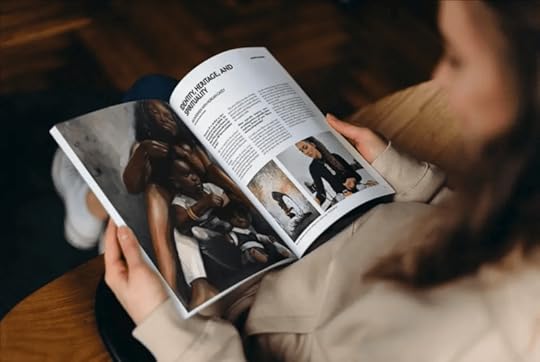
Come Follow Me: Doctrine and Covenants 124 “A House unto My Name”

Doctrine and Covenants 124 outlines a vision for the new city of Nauvoo, a place where early LDS church members hoped to build “a cornerstone of Zion.” (D&C 124:2) They didn’t fully realize this vision before they left Nauvoo only 7 years after starting the community, but Doctrine and Covenants 124 describes a bold vision for creating inclusive, diverse communities that we can continue to strive for today.
Table of ContentsThe City of Nauvoo: “planted to be a cornerstone of Zion” (D&C 124:2)Nauvoo House: “a resting place for the weary traveler”(D&C 124:60)God sees our unique strengths: “I, the Lord, love him”(D&C 124:15; D&C 124:20)The City of Nauvoo: “planted to be a cornerstone of Zion” (D&C 124:2)After Missouri Governor Lilburn W. Boggs signed the extermination order on October 27, 1838, calling for members of the Church of Jesus Christ of Latter-day Saints (LDS) to be “exterminated or driven from the State if necessary,” church members were forced to leave Missouri. (See Church History: Extermination Order.) In 1839, the Church of Jesus Christ of Latter-day Saints bought 19,000 acres of property so they could relocate to Illinois. Doctrine and Covenants 124 outlines a vision for Nauvoo, the city LDS church members would build in Illinois. Nauvoo is a Hebrew word translated as “beautiful” in the King James Bible. (See Church History: Nauvoo (Commerce), Illinois and Isaiah 52:7) Jospeh Smith chose the name for Nauvoo after this Bible verse:
Based on this verse, what kind of a city do you think Joseph Smith was trying to create in Nauvoo?
How beautiful upon the mountains are the feet of him that bringeth good tidings, that publisheth peace; that bringeth good tidings of good, that publisheth salvation; that saith unto Zion, Thy God reigneth!
Isaiah 52:7
According to Doctrine and Covenants 124:2, the goal would be to make Nauvoo “a cornerstone of Zion.” (See Doctrine and Covenants Historical Resources: Isaac Galland and Doctrine and Covenants 124:2)
Consider these scriptures:
And the Lord called his people Zion, because they were of one heart and one mind, and dwelt in righteousness; and there was no poor among them.
Moses 7:18
What is Zion?
Therefore, verily, thus saith the Lord, let Zion rejoice, for this is Zion—THE PURE IN HEART…
Doctrine and Covenants 97:21

Here is a definition of the word, cornerstone. (Don’t confuse cornerstone with keystone, a favorite metaphor of Joseph Smith and Ezra Taft Benson for the Book of Mormon.)
How would you interpret the metaphor of Nauvoo as a “cornerstone of Zion”?
What it is: A cornerstone is the first stone placed upon a building’s foundation, in a corner of the structure.
What it does: A cornerstone bears much of the weight of a building’s outer structure, and it connects and unites two of the walls. After it is placed, all other stones and their angles are measured out from it.
—The Cornerstone, Ensign, January 2016
This vision for building a cornerstone of Zion in Nauvoo was not fully realized before most members of the Church evacuated Nauvoo in 1846, following the murders of Joseph and Hyrum Smith. Let’s consider how we can pick up where our pioneer forebears left off and build Zion in our own modern congregations and communities. Let’s examine the ideals that early church members intended to cultivate in Nauvoo, as described in Doctrine and Covenants 124.
 Nauvoo Illinois, by Henry LewisNauvoo House: “a resting place for the weary traveler”(D&C 124:60)
Nauvoo Illinois, by Henry LewisNauvoo House: “a resting place for the weary traveler”(D&C 124:60)Doctrine and Covenants 124 instructs Mormon pioneers to build Nauvoo House, a place to shelter people moving to the city of Nauvoo from other places, including immigrants from other countries.
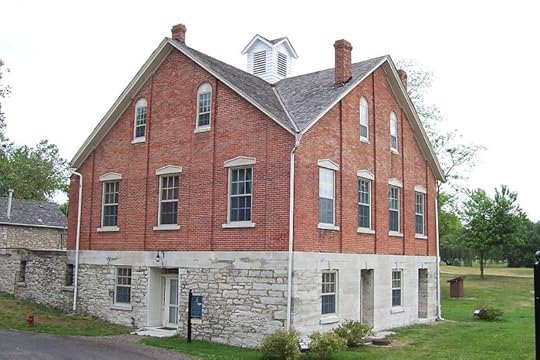 Nauvoo House
Nauvoo HouseWhy should we welcome and accept strangers?Why is achieving “health and safety” for “the weary traveler” necessary to facilitate “contemplat[ing] the word of the Lord”?How can we better welcome and accept strangers in our modern communities?How can we make our church congregations like what the Lord had envisioned for the Nauvoo?
22 Let my servant George, and my servant Lyman, and my servant John Snider, and others, build a house unto my name, such a one as my servant Joseph shall show unto them, upon the place which he shall show unto them also.
23 And it shall be for a house for boarding, a house that strangers may come from afar to lodge therein; therefore let it be a good house, worthy of all acceptation, that the weary traveler may find health and safety while he shall contemplate the word of the Lord; and the cornerstone I have appointed for Zion.
24 This house shall be a healthful habitation if it be built unto my name, and if the governor which shall be appointed unto it shall not suffer any pollution to come upon it. It shall be holy, or the Lord your God will not dwell therein.
25 And again, verily I say unto you, let all my saints come from afar.
60 …And let the name of that house be called Nauvoo House; and let it be a delightful habitation for man, and a resting-place for the weary traveler, that he may contemplate the glory of Zion, and the glory of this, the cornerstone thereof;
61 That he may receive also the counsel from those whom I have set to be as plants of renown, and as watchmen upon her walls.
Doctrine and Covenants 124:22-25, 60-61
Let’s revisit Doctrine and Covenants 124:61. What are “plants of renown”? This phrase alludes to the Bible, quoting the King James Version of Ezekiel 34:29.
29 And I will raise up for them a plant of renown, and they shall be no more consumed with hunger in the land, neither bear the shame of the heathen any more.
Ezekiel 34:29
Clear as mud? Let’s try a different translation.
I will provide for them a land renowned for its crops, and they will no longer be victims of famine in the land or bear the scorn of the nations.
Ezekiel 34:29 (New International Version)
Now, let’s read the verse in context. We’ll use the King James Bible, since that is the translation available to members of the Church of Jesus Christ of Latter-day Saints (LDS), but I’ll add clarifying text from the New International Version in spaces where the King James Bible is particularly oblique.
Why do you think Doctrine and Covenants 124 referenced Ezekiel 34? What could church members in Nauvoo learn from Ezekiel 34?How can we create the kind of community envisioned in Ezekiel 34 in our own modern homes, congregations and communities?
11 ¶ For thus saith the Lord God; Behold, I, even I, will both search my sheep, and seek them out. [I myself will search for my sheep and look after them.]
12 As a shepherd seeketh out his flock in the day that he is among his sheep that are scattered; so will I seek out my sheep, and will deliver them out of all places where they have been scattered in the cloudy and dark day.
13 And I will bring them out from the people [nations], and gather them from the countries, and will bring them to their own land, and feed them upon the mountains of Israel by the rivers, and in all the inhabited places of the country.
14 I will feed them in a good pasture, and upon the high mountains of Israel shall their fold be: there shall they lie in a good fold, and in a fat [rich] pasture shall they feed upon the mountains of Israel.
15 I will feed my flock, and I will cause them to lie down, saith the Lord God.
16 I will seek that which was lost, and bring again that which was driven away, and will bind up that which was broken, and will strengthen that which was sick: but I will destroy the fat and the strong; I will feed them with judgment. [I will shepherd the flock with justice.]
25 …And I will make with them a covenant of peace, and will cause the evil beasts to cease out of the land: and they shall dwell safely in the wilderness, and sleep in the woods [sleep in the forests in safety].
26 And I will make them and the places round about my hill a blessing; and I will cause the shower to come down in his season; there shall be showers of blessing.
27 And the tree of the field shall yield her fruit, and the earth shall yield her increase [its crops], and they shall be safe in their land, and shall know that I am the Lord, when I have broken the bands of their yoke, and delivered them out of the hand of those that served themselves of them [enslaved them].
28 And they shall no more be a prey to the heathen [nations], neither shall the beast of the land devour them; but they shall dwell safely, and none shall make them afraid.
29 And I will raise up for them a plant of renown [a land renowned for its crops], and they shall be no more consumed with hunger in the land, neither bear the shame of the heathen [scorn of the nations] any more.
30 Thus shall they know that I the Lord their God am with them, and that they, even the house of Israel, are my people, saith the Lord God.
Ezekiel 34:11-16, 25-30, King James Version (bold-italicized text in brackets are excerpts from the New International Version inserted for clarity)
Watch the video, A Friend to All, featuring LDS apostle Ulisses Soares, who was raised in a family of converts to the LDS Church in Brazil.
How could Elder Soares’ lifestory have been different if his LDS congregation had not been so welcoming to his family?According to Elder Soares, “diversity is very important.” Why?How can we “respect” every person’s “own way of thinking”?How can we “embrace” and “learn from the different ways people think”?How does learning how others think help us “improve ourselves”?One of the travelers who found refuge at Nauvoo House was Jane Manning James, one of the most prominent Black members of the early LDS Church.
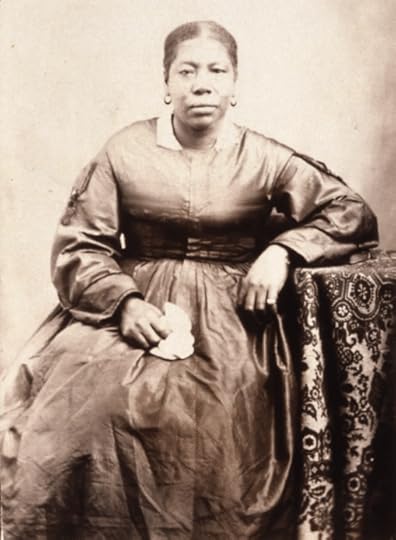 Jane Manning James
Jane Manning JamesWatch this video in which a missionary in Nauvoo recites Jane’s own account of her 800-mile voyage to Nauvoo: The Trail of Hope: 13 Stories of the Nauvoo exodus – Day 10: Jane Manning James.
You can also read Jane’s personal account in The Autobiography of Jane Manning James.
In what ways do you think Mormon pioneers succeeded in creating a welcoming community for Jane Manning James?In what ways did they fail her?How can we continue to work toward making our church congregations more welcoming for people of all racial and ethnic backgrounds?God sees our unique strengths: “I, the Lord, love him”(D&C 124:15; D&C 124:20)
Jane was a prominent and beloved figure in the Black community. Within the Mormon church, Jane was an active member of the Relief Society and featured in the early years of the influential Utah women’s newspaper, the Woman’s Exponent. During her lifetime, church policy restricted Black members from receiving the priesthood and having access to temple ordinances. Jane advocated to change this policy by repeatedly asking church leadership to make those ordinances available to her. Her life provides insight into Black Latter-Day Saints’ experience in Utah during the early years of Mormon settlement. Jane’s example of strong conviction to her faith still inspires today.
…Jane was extremely involved in the community, contributing money to build the Salt Lake Temple and serving in the Relief Society and the Young Ladies’ Retrenchment Society. Though Jane was an involved member of the Church, because of her race she was not permitted to enter the temple to receive her own ordinances. Jane appealed to leaders of the church to receive her temple endowment and sealing to her family but was only permitted to participate in baptisms inside the Salt Lake Temple during her lifetime.
Jane still remained an active member of the Church and was a leader in the Black community in Utah. Jane was very vocal in the Relief Society, and she is recorded in the meeting minutes as declaring her belief in church doctrine despite her inability to fully participate in all the ordinances it had to offer. She was also an active political participant. At a Ladies Democratic Club meeting in 1903, she and her husband were given silk umbrellas as a prize for being the oldest couple there. Jane’s political involvement helped create space for Black Americans’ participation in Utah politics.
—Grace Chipman, Jane Manning James, Advocate for Equality in the Church of Jesus Christ, Utah Women’s Hisptry: A Better Days Project
Invite the class to scan Doctrine and Covenants 124:12-21, looking for the specific positive attributes and contributions described about unique individuals named in these verses. List individuals’ names with their unique characteristics and/or contributions on the whiteboard/chalkboard as people find them and call them out.
12 And again, verily I say unto you, let my servant Robert B. Thompson help you to write this proclamation, for I am well pleased with him, and that he should be with you;
13 Let him, therefore, hearken to your counsel, and I will bless him with a multiplicity of blessings; let him be faithful and true in all things from henceforth, and he shall be great in mine eyes;
14 But let him remember that his stewardship will I require at his hands.
15 And again, verily I say unto you, blessed is my servant Hyrum Smith; for I, the Lord, love him because of the integrity of his heart, and because he loveth that which is right before me, saith the Lord.
16 Again, let my servant John C. Bennett help you in your labor in sending my word to the kings and people of the earth, and stand by you, even you my servant Joseph Smith, in the hour of affliction; and his reward shall not fail if he receive counsel.
17 And for his love he shall be great, for he shall be mine if he do this, saith the Lord. I have seen the work which he hath done, which I accept if he continue, and will crown him with blessings and great glory.
18 And again, I say unto you that it is my will that my servant Lyman Wight should continue in preaching for Zion, in the spirit of meekness, confessing me before the world; and I will bear him up as on eagles’ wings; and he shall beget glory and honor to himself and unto my name.
19 That when he shall finish his work I may receive him unto myself, even as I did my servant David Patten, who is with me at this time, and also my servant Edward Partridge, and also my aged servant Joseph Smith, Sen., who sitteth with Abraham at his right hand, and blessed and holy is he, for he is mine.
20 And again, verily I say unto you, my servant George Miller is without guile; he may be trusted because of the integrity of his heart; and for the love which he has to my testimony I, the Lord, love him.
21 I therefore say unto you, I seal upon his head the office of a bishopric, like unto my servant Edward Partridge, that he may receive the consecrations of mine house, that he may administer blessings upon the heads of the poor of my people, saith the Lord. Let no man despise my servant George, for he shall honor me.
Doctrine and Covenants 124:12-21
What kinds of attributes does the Lord value?How are these attributes similar to or different from traits we tend to value in others around us?Why did the Lord need people with these attributes to build Nauvoo?Why do we need people with unique characteristics and contributions in our modern church?Do you know anyone who possesses any of these positive attributes? Have you ever told them the positive attributes you see in them?Why is it important to name the positive attributes we see in others?How can we better appreciate and recognize people for their unique characteristics and contributions?The Temple: “a house to my name, for the Most High to dwell therein” (D&C 124:27)
Doctrine and Covenants 124 includes a mandate to build a temple in Nauvoo. Fulfilling this mandate was so important to Nauvoo settlers that even under tremendous pressure to evacuate the city, they stayed until they could complete the building and quickly attain temple ordinances before abandoning the building to move West. (See Church History: Nauvoo (Commerce), Illinois)
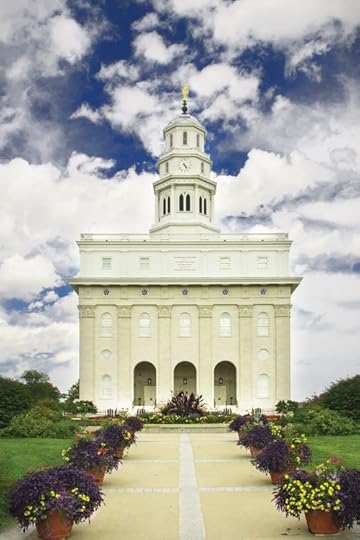 Nauvoo Temple
Nauvoo TempleAccording to these verses, what is the purpose of a temple?Why would a Zion community need a temple?
26 And send ye swift messengers, yea, chosen messengers, and say unto them: Come ye, with all your gold, and your silver, and your precious stones, and with all your antiquities; and with all who have knowledge of antiquities, that will come, may come, and bring the box tree, and the fir tree, and the pine tree, together with all the precious trees of the earth;
27 And with iron, with copper, and with brass, and with zinc, and with all your precious things of the earth; and build a house to my name, for the Most High to dwell therein.
28 For there is not a place found on earth that he may come to and restore again that which was lost unto you, or which he hath taken away, even the fulness of the priesthood.
29 For a baptismal font there is not upon the earth, that they, my saints, may be baptized for those who are dead.
39 …Therefore, verily I say unto you, that your anointings, and your washings, and your baptisms for the dead, and your solemn assemblies, and your memorials for your sacrifices by the sons of Levi, and for your oracles in your most holy places wherein you receive conversations, and your statutes and judgments, for the beginning of the revelations and foundation of Zion, and for the glory, honor, and endowment of all her municipals, are ordained by the ordinance of my holy house, which my people are always commanded to build unto my holy name.
40 And verily I say unto you, let this house be built unto my name, that I may reveal mine ordinances therein unto my people;
41 For I deign to reveal unto my church things which have been kept hid from before the foundation of the world, things that pertain to the dispensation of the fulness of times.
Doctrine and Covenants 124:26-29, 39-41
Watch the video, Latter-day Saint Temples (What Is a Temple?). This video explains how temples differ from churches and how temples are intended to bring church members closer to God. This video, produced by the LDS Church to explain Latter-day Saint temples to a non-Mormon audience, includes a cameo by Exponent II founding mother Laurel Thatcher Ulrich and perspectives about Latter-day Saint temples from members of the LDS church from around the world and from Catholic and Jewish theologians.
October 15, 2025
New First Presidency Can Lead to Leadership Gaps

Gordon B. Hinckley joined the first presidency of the LDS Church in 1981 as a special bonus counselor. Due to the failing health of the other presidency members, he had to step in and run the operations of the presidency. He did this multiple times as a presidency members until he officially became the president of the church in 1995. Hinckley recalled “that was a very heavy and overwhelming responsibility” and that “it was an almost terrifying load at times.”
Hinckley felt the very real weight of doing the work of 2-3 others for years because those he should have shared it with were incapacitated or limited due to their health. If you read American Zion by Benjamin Park or Second Class Saints by Matthew Harris, you’ll see a similar pattern throughout the 20th century. Presidents often served in the highest callings while battling health issues. David O. McKay, who died at 96, struggled with short-term memory loss. Joseph Fielding Smith at age 93 had confusion and memory loss for his two years of presidency. Spencer W. Kimball had a subdural hematoma in 1982, which rendered him mentally incapacitated until his death in 1985.
Throughout all these episodes, the general church population knew little, if anything, about the actual physical health of their prophets. Not that this surprises me. Just in the last decade Thomas Monson slurred through his short conference talks, yet we only guessed through rumors and whispers that he had Alzheimer’s. Now looking at the images and talks of current apostles, it’s not hard to surmise they are also struggling with various health challenges. Sometimes the church will make a brief announcement about this, but generally they do not state the severity, preferring to gloss over the ramifications.
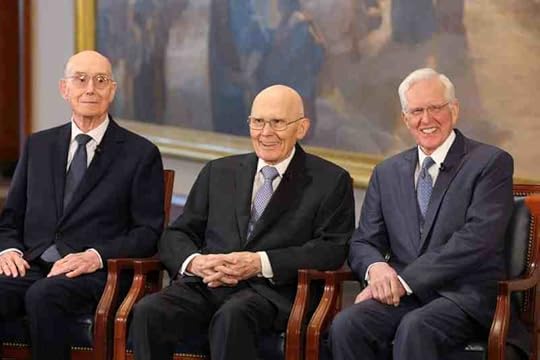 The newly called First Presidency, October 14, 2025
The newly called First Presidency, October 14, 2025I full acknowledge that this is just speculation, but looking at Dallin H. Oaks this past weekend I do not have great confidence that he’s in the best health. He spoke obsessively about the past and his body language suggested exhaustion. Yet today he was officially named the prophet and president of the LDS church. His 1st Counselor, Henry B. Eyring, looks vacantly distracted in the press release photo. Last conference, both men were wheeled in and out of the meeting in wheelchairs.
Oaks is 93 and Erying is 92. There is no shame in growing older and no reason people of all ages should not be able to give everything they want to give to the church or any organization. But this is not the issue. To me, it boils down to three main things: 1. apostles and prophets are required to serve until death regardless of their personal desires or capacity, 2. someone else will have to pick up the slack on required work, and 3. even with others doing the extra work, there will be an invisible leadership void at the highest rungs of the church.
Apostles and prophets serve for life, no exceptions made. This policy has been in place since the 19th century and is probably out of date. People in the 19th century didn’t generally live as long as they do now. In the 1870s, average life expectancy was 43 years old. Today its 79 years old. While many prophets did live into their later decades, it doesn’t seem the system was built to support all the men in charge living into their 90s at the same time. This means many leaders can be having age-related health issues at the same time. Since church leaders get the best health care available (and the invisible labor of women scaffolding their lives), I highly doubt this pattern will disappear anytime soon. We will be staring at the same aging men struggling through health issues and just hanging on for a very long time. Low turn over rates provide little opportunity for growth, change, and developing new leaders. This seems like another way the 19th century church holds the 21st century church hostage.
This system also provides no escape hatches for leaders who truly need or want to take a step back. A leader resigning or respectfully going emeritus simply never happens. All members of all ages should be welcome to give in whatever capacity they desire but no one, not even the men at the very top, should be forced to do so. No one should feel so obligated by precedent and pressure that they won’t even consider stepping down when they need or want to. Where is the line between willing service and elder abuse?
Even as leaders’ abilities and energy diminish, the work still needs to get done. In a church that’s completely hierarchical, only very specific people can do specific things. Today, D. Todd Christofferson was announced as the 2nd Counselor in the presidency. The pattern with Hinckley appears very primed to repeat itself. Christofferson is only 80, over a decade younger and seemingly in better health than his two counterparts. Most likely, he will be carrying the burden of the first presidency in the near future. How is this fair to him? Asking him to do double or triple the work cannot be healthy or sustainable for a long time. Those around him, especially his wife, will also see increased demands on their time and energy.
How is one leader shouldering the weight of the presidency fair to the church as a whole either? What implications does this have for prophetic authority? Is it honest to sustain one man as prophet while another is secretly doing his job? At any point will members know if Christofferson is stepping in to do Oaks’ role?
All of these issues add up to a leadership void in the church hierarchy. If health issues keep leaders from attending meetings or making sound judgments, bigger issues might take longer to work out. We know the leaders rarely, if ever, make big changes without complete agreement. So most likely leaders will stay exactly where they are, never moving the church into the new directions it needs to go. This creates a stagnancy that can cost membership, faith, and literal lives. Average members will be the ones ultimately hurt by gaps in leadership that hold the church back.
Even if Oaks and his counselors stay in perfect health, members can still suffer under a leadership gap. A very insulated group like the presidency and apostles can turn into an echo chamber. Reports frequently describe leadership being surrounded by “yes men.” Money is no object to a church worth over $300 billion dollars. Minorities and women have limited access to upper leadership and no final voting voice to offer a different perspective. These nonagenarians have proved time and again that they rarely change their mind on the issues they attach their personal ministry to. Despite being the new leader for 2025, Oaks likes to live in the past, upholding 1950s gender roles and a fictitious family life that does not line up with most modern families. He refuses to acknowledge LGBTQ+ individuals as full humans deserving of rights and God’s love. Oaks recently admitted there might be “Heavenly Mothers” and polygamy in heaven. Like Nelson, he may make cosmetic changes akin to two hour church and a new logo. But those aren’t real fundamental changes that will drastically improve the life of everyday members.
The church has a continual leadership void because old men hold onto power for too long, too entrenched in their personal pet peeves and decades-old advice. Age absolutely can bring wisdom and perspective. But there’s a point when that wisdom and perspective isn’t relevant to a modern church in terms of ultimate leadership over every one and every thing. Latter-day Saints are missing out on relevant leadership and new ideas. Latter-day Saints don’t get diverse voices from leadership. Women get no representation in the room where it happens. Members are living below their privileges as children of God who are held back by a leadership group that keeps longing for a past that doesn’t exist anymore. As a fellow ward member, Oaks’ thoughts would annoy me but could be ignored. But as the prophet worshipped as the mouthpiece of God, his words matter deeply–effecting everything from individuals, to lesson plans, to the entire direction of the church.
If Christofferson or another leader has to significantly step in to keep things running, I question how much average members will know about it. I have concerns with the church sustaining a leader who isn’t really all there or acting in his responsibilities despite getting all the credit. I wonder how we can parse out the actual power of someone like Christofferson versus the quorum, versus the prophet. What is slipping through the cracks or being forced on the church without proper channels?
I recognize that some of my concern is speculation. We don’t honestly know the real health status of Oaks or any of the twelve. We can’t say for certain how much of a role Christofferson will play or what changes Oaks will want to make. But my fears are not unprecedented. As we’ve seen throughout the late 20th century, prophets and leaders frequently live longer, serve in poorer health, and cannot fully perform their outlined duties. There is no opportunity for leaders to retire and members will be kept in the dark about the real severity of their leaders’ health. Other leaders have to step up and carry extra weight when fellow leaders struggle with health issues and none of this leadership transfer is relayed to the public. There can absolutely be void in leadership either through incapacitation or deeply-entrenched male leadership that lacks diversity.
I remain highly skeptical that positive, significant changes will happen under an Oaks’ presidency, whether he’s incapacitated or not. I imagine the next few years will be more the same–short or pre-recorded conference messages, cosmetic changes touted as revelation, and increased messaging of obedience to mortal men. Perhaps, I’ll be surprised. I’d honestly love to be wrong. But I’m highly doubtful I will be.
October 14, 2025
They Killed Her Anyway: What Rebecca Nurse and the Salem Witch Trials Teach Us About Fear and Belonging

My 9th great-grandmother was killed in the Salem Witch Trials. Unlike my first trip to Salem, in which I dressed as a witch and visited several kitschy tourist sites, I had a singular goal for my trip last month: to visit the Rebecca Nurse Homestead in nearby Danvers, Massachusetts. A volunteer from the small nonprofit that hosts the site graciously opened on a day they are typically closed for me and fellow blogger Lavender.
We arrived early, walking along a path still damp with morning dew to the family cemetery. Lore has it that shortly after her death, Rebecca’s family took her body from its shallow grave in Salem and buried her on their property. Her large tombstone, placed by her descendants in 1885, stands as a lasting memorial. We paid our respects, then toured her home. We saw the hearths on which she cooked and the rooms where she worked, entertained, slept, and was arrested. It was both moving and heartbreaking.
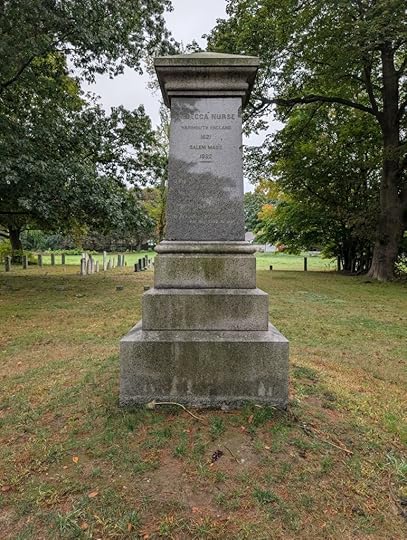 Memorial gravestone for Rebecca Nurse, killed as a witch in Salem, Massachusetts, July 16, 1692.
Memorial gravestone for Rebecca Nurse, killed as a witch in Salem, Massachusetts, July 16, 1692.At seventy-one years old, Rebecca Nurse was a mother of eight grown children, a grandmother many times over, and a confirmed member of the Salem Town Church. Despite her age, faith, and standing in the community, she became one of the first victims hanged during the Salem witch trials of 1692–93.
I am one of her likely millions of descendants. I am not rare or special. And neither was she, except that accusers took her from her sickbed and executed her as a witch.
Rebecca Nurse—and the others executed with her—were not witches. They were people, mostly women, swept up in a moment of fear and frenzy. Neither Rebecca’s devotion to God, her church membership, nor her contributions to her community could save her. It was not possible to be good enough, righteous enough, or conforming enough to escape her fate.
The Salem witch trials emerged at the intersection of political upheaval and religious fear. Two main factors stand out to me.
First, Massachusetts had just received a new royal charter and governor, which reshaped the courts and led to the admission of “spectral evidence” based on dreams and visions. Had the accusations begun a few years earlier or later, the outcome might have been very different.
Second, Puritans believed that the devil was a real, active, and terrifying presence in the world, targeting God’s people. Witches, they thought, were people who gained supernatural powers from making a pact with the devil, a conscious act of rebellion against God.
Together, these forces created the perfect conditions for tragedy. Between February 1692 and May 1693, more than 200 people were accused, thirty were convicted, fourteen women and five men were hanged, one man was crushed to death, and at least five people died in jail while awaiting trial.
A short distance from the homestead is the Danvers Witchcraft Victims Memorial, erected in 1992 to honor the innocent people who were killed during the hysteria. It bears each of their names alongside quotes from several victims. Rebecca’s quote says, “I can say before my Eternal Father I am innocent & God will clear my innocence.” She clung to her faith to the end. Mary Esty pleaded that the madness would stop on behalf of others accused: “I Petition to your honours not for my own life for I know I must die and my appointed time is sett but the Lord he knowes it is that if it be possible no more innocent blood may be shed.”
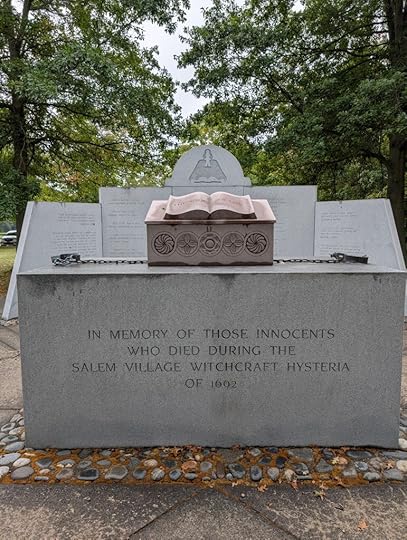 Witch Trials Victims Memorial in Danvers, Massachusetts.
Witch Trials Victims Memorial in Danvers, Massachusetts. Salem was a community with roughly 2,000 inhabitants in the late 1600s. Few families were left untouched by accusations. Killing these women and men on false charges of witchcraft was a tragedy. But could it happen again?
BBC Radio 4 has a brilliant 13-episode podcast, The Witch, hosted by India Rakusen, which traces the concept of the witch across time—from historical interpretations to modern pop culture, from accusations of sorcery to contemporary practitioners of witchcraft.
The series is exceptionally well done, but what has stayed with me the most comes from Episode 3, which explores the question of whether witch trials could happen again. I’m haunted by the words of Claire Mitchell, co-founder of Witches of Scotland, a campaign seeking justice for the nearly 4,000 people—mostly women—accused of witchcraft in Scotland between 1563 and 1736. Mitchell says she is motivated to create a historical marker to remind future generations that what happened during the Scottish witch trials was wrong. She said, “Witch trials are happening around the world [today]. They’re not happening around the world because people are stupid or because people aren’t educated enough. It’s to do with belief systems. And if a belief system in this country took over again, that the devil could be amongst us and there was still misogyny, could you find yourself in the same position again? Why not? History repeats itself.”
In fact, witch trials—actual accusations of witchcraft that lead to the torture or death of the accused—still occur today, and are on the rise in some places in the world. It’s easy to dismiss accusations of witchcraft as being silly and rooted in superstition and a lack of education, but like Claire Mitchell said, it’s not about intelligence, it’s about belief systems. Even rational people can be swept up in beliefs that allow them to blame others for what goes wrong, whether on a small or massive scale. Accusations don’t need to rest on objective evidence or align with science or logic; they only need to fit within a shared belief system and find the right mix of political and social opportunity to become deadly.
Many moments in history have been compared to witch trials or “witch hunts.” Famously, Arthur Miller’s play The Crucible uses the Salem Witch Trials as an allegory for the Red Scare and anti-communist hysteria in 1950s America. In high school, I even played Rebecca Nurse in our production. More recently, blogger Candice Wendt wrote about an exhibit on witch trials she visited in Montreal and the parallels she saw in how the LDS Church treats Mormon feminists. The basic pattern is this: powerful people utilize belief systems to justify dehumanizing or marginalizing others, though the severity of the consequence varies.
Sometimes, powerful men use the term “witch hunt” to dismiss or minimize accusations of wrongdoing, signaling to their followers that such claims fall outside their shared belief system or group identity. I always find it striking when a powerful man invokes the phrase, given that the real victims of witch hunts are overwhelmingly marginalized women, those with the least power to defend themselves.
Accusations of witchcraft may be more likely to come from religious people seeking to root out a specific, feared evil, but more generally, this deadly practice can center around a shared political or nationalist identity with expectations that shape belonging. The label of “witch” marks an individual as outside the protection of society. It overrides other labels of belonging like “mother,” “neighbor,” “sister,” “teacher,” “cook,” “healer,” or “friend.” Once someone is a “witch,” they may be imprisoned, exiled, or at times killed with impunity. But “witch” is not the only label that allows this.
Witch trials depend on shared belief systems and moments of political opportunity to spiral into tragedy, but they are not inevitable. They can be interrupted when decision-making bodies include diverse voices and perspectives, especially those outside a tight-knit group. The frenzy slows when justice gains distance and neutrality, when the accusers are not also the judges and executioners. And it can be stopped altogether when people refuse to dehumanize the vulnerable and when empathy is treated as a strength rather than a weakness.
In Salem, it is tragic that it took the accusation of Governor William Phips’s own wife for him to finally intervene, disbanding the special court and pardoning the accused. Yet even that moment reminds us that people in power can still awaken, can still choose to stop the harm and change the course of justice.
Walking where Rebecca once lived, I felt the weight of her humanity. She lived faithfully by every measure her community defined as righteous—and they killed her anyway. It has me asking, who are we being asked to view as less than human? How can we interrupt that cold, dangerous way of thinking?



